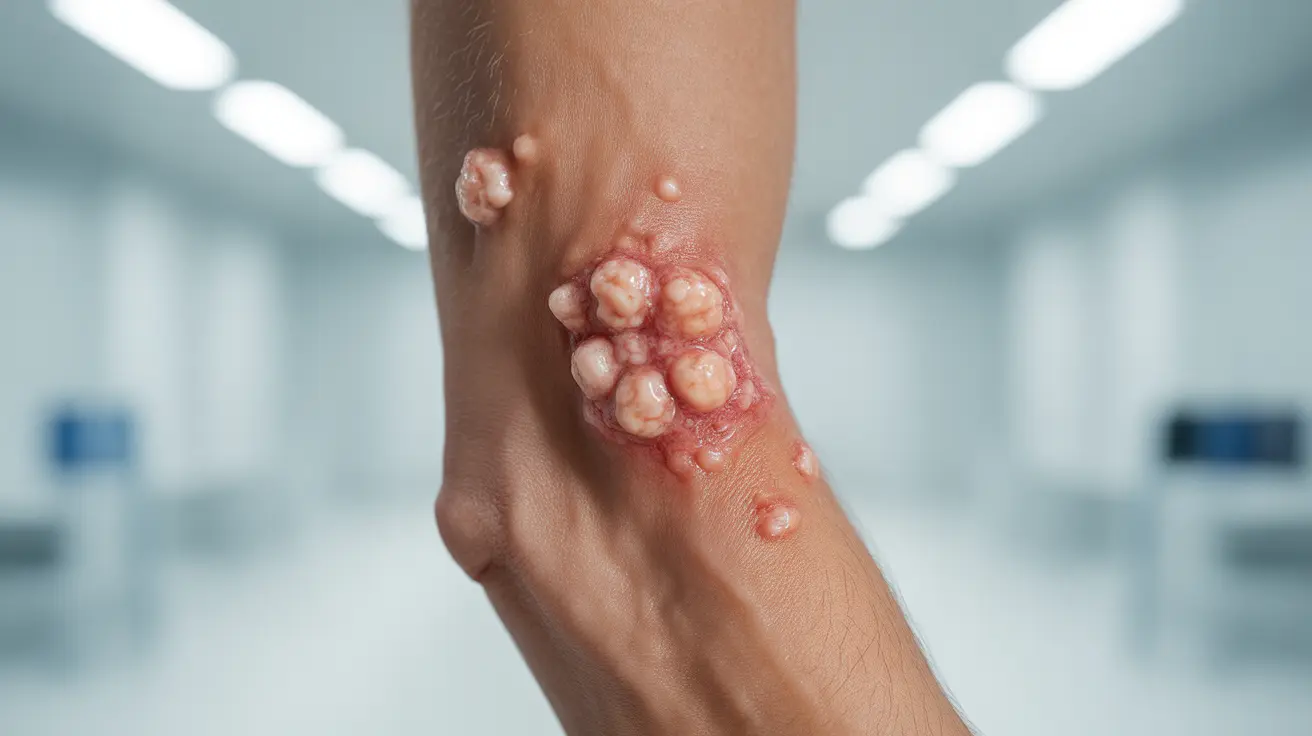Identifying a MRSA (Methicillin-resistant Staphylococcus aureus) staph infection early can be crucial for proper treatment and preventing its spread. This comprehensive guide will help you understand what MRSA infections look like, their symptoms, treatment options, and prevention strategies.
Visual Characteristics of MRSA Infections
MRSA staph infections typically begin as small, red bumps that may resemble pimples, spider bites, or boils. These infections can quickly develop into deep, painful abscesses that require medical attention. The affected area often appears:
- Red and swollen
- Warm to the touch
- Filled with pus or other drainage
- Increasingly painful
- Surrounded by spreading redness
Common Infection Sites
MRSA infections commonly appear on:
- Areas with cuts or abrasions
- Regions where medical devices enter the body
- Places with more hair (back of neck, groin, armpits)
- Areas subject to friction or pressure
Recognizing MRSA Symptoms
Beyond the visible signs, MRSA infections may present with additional symptoms that warrant immediate medical attention:
- Fever
- Chills
- Muscle aches
- Fatigue
- Headache
- Rash
- General feeling of malaise
When to Seek Medical Care
Contact a healthcare provider immediately if you notice:
- An infection that's getting worse despite home care
- Spreading redness beyond the initial site
- Fever or other systemic symptoms
- Multiple sites of infection
- Deep or large abscesses
Treatment Approaches for MRSA
Since MRSA is resistant to many common antibiotics, treatment typically involves:
- Incision and drainage of abscesses
- Specialized antibiotics effective against resistant bacteria
- Wound care and regular dressing changes
- Follow-up care to ensure complete healing
Prevention and Risk Reduction
Reduce your risk of MRSA infection by:
- Practicing good hand hygiene
- Keeping wounds clean and covered
- Avoiding shared personal items
- Using protective barriers in high-risk settings
- Maintaining clean environments
Risk Factors and High-Risk Groups
Certain populations face higher risks for MRSA infections:
- Healthcare workers
- Athletes in contact sports
- Military personnel
- People with weakened immune systems
- Individuals in crowded living conditions
- Recent hospital patients or surgery recipients
Frequently Asked Questions
What do MRSA staph infection pictures look like, and how can I tell if I have one? MRSA typically appears as red, swollen bumps that may look like spider bites or pimples initially. They often become painful, warm to the touch, and may develop into deep abscesses filled with pus.
What are the main symptoms of a staph infection on the skin, and when should I see a doctor? Main symptoms include redness, swelling, warmth, pain, and pus drainage. See a doctor if the infection worsens, spreads, or is accompanied by fever or multiple infection sites.
How is a staph infection treated if regular antibiotics don't work, and what are the treatment options for MRSA? MRSA treatment typically involves drainage of abscesses, specialized antibiotics that target resistant bacteria, proper wound care, and regular medical monitoring.
Who is most at risk for getting a MRSA staph infection, and how can I lower my chances of getting one? Healthcare workers, athletes, military personnel, and those with weakened immune systems are at higher risk. Lower your risk through good hygiene, wound care, and avoiding shared personal items.
Can you get MRSA from touching someone or sharing personal items, and what steps can I take to prevent spreading it? Yes, MRSA can spread through direct contact or shared items. Prevent spread by washing hands regularly, keeping wounds covered, avoiding sharing personal items, and maintaining clean environments.




